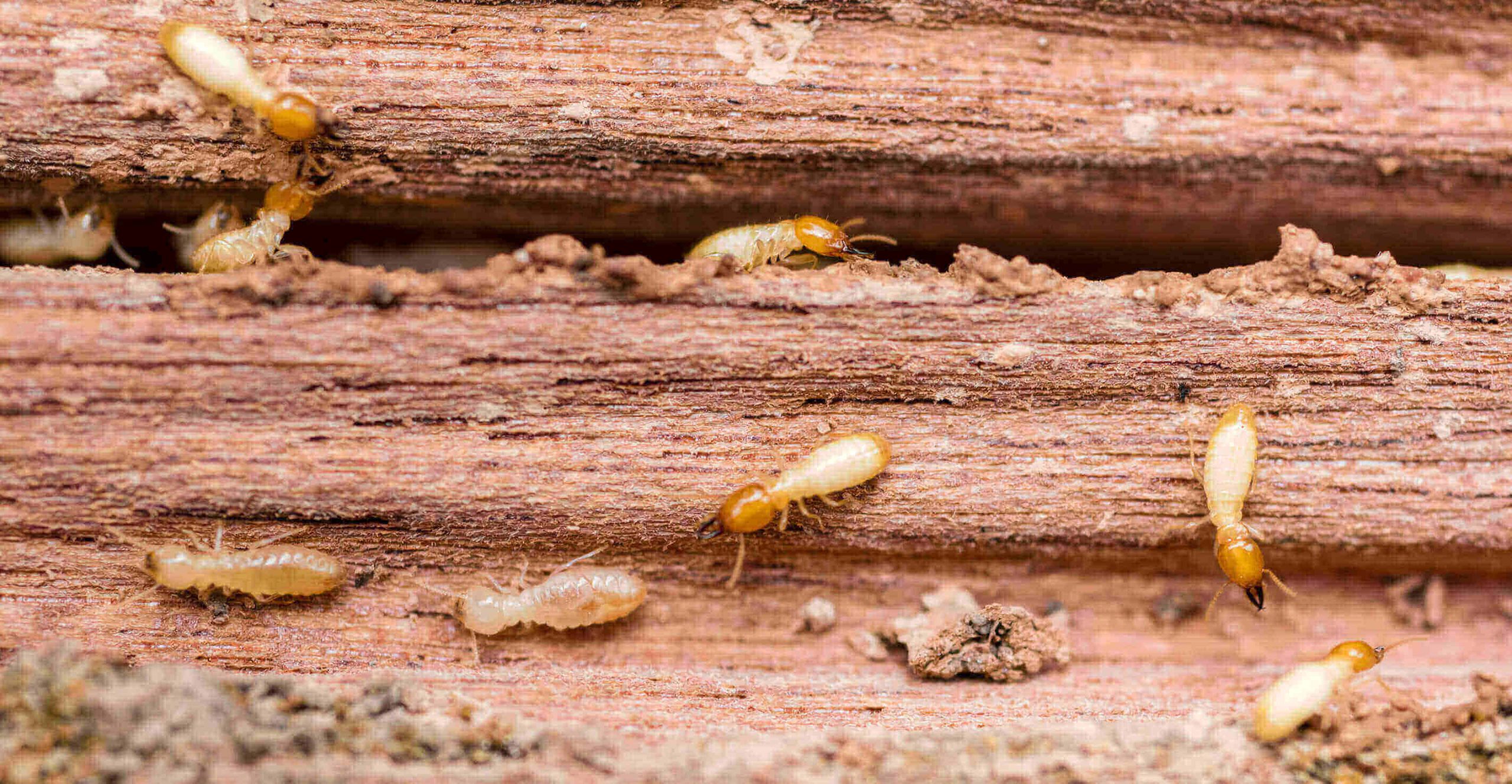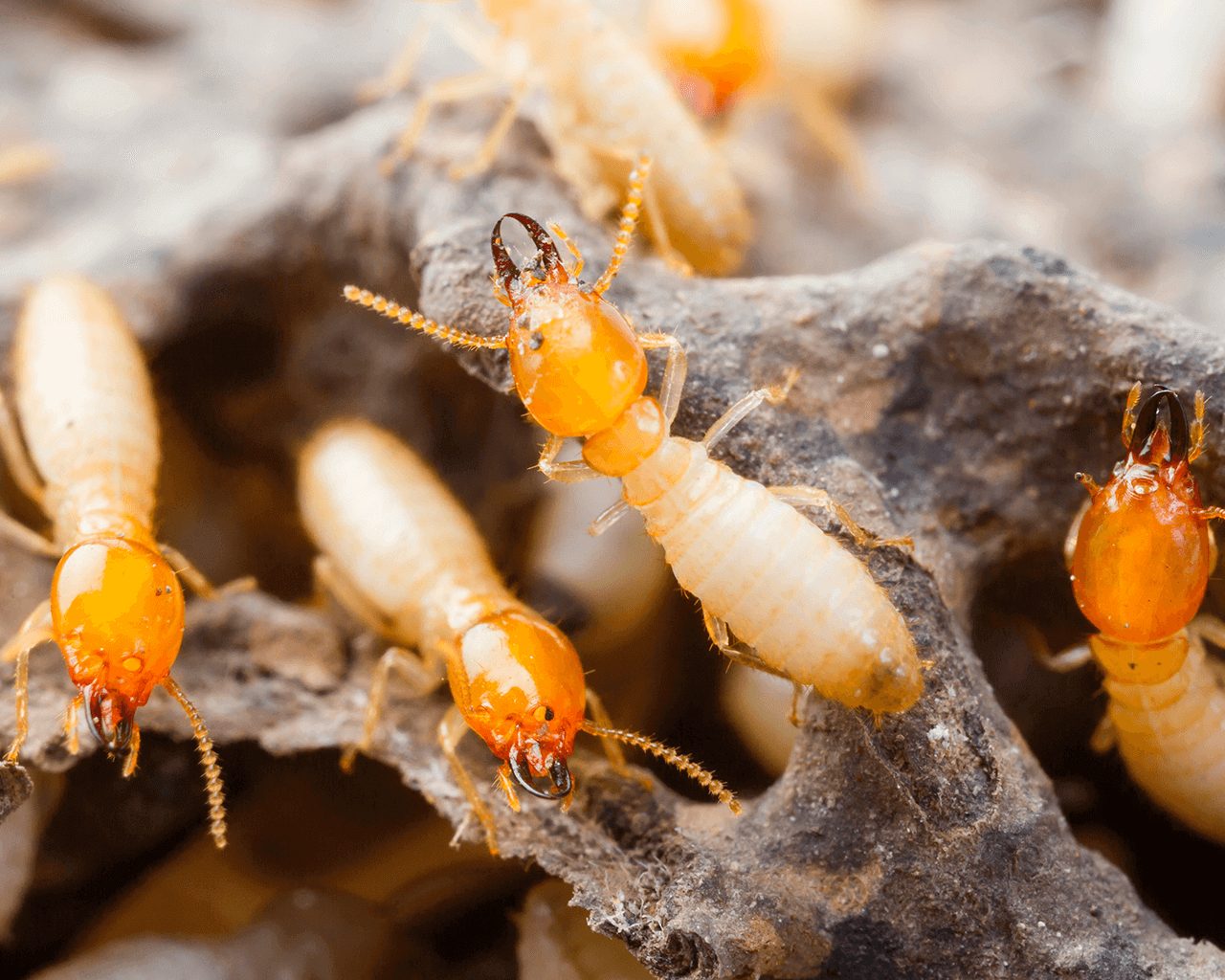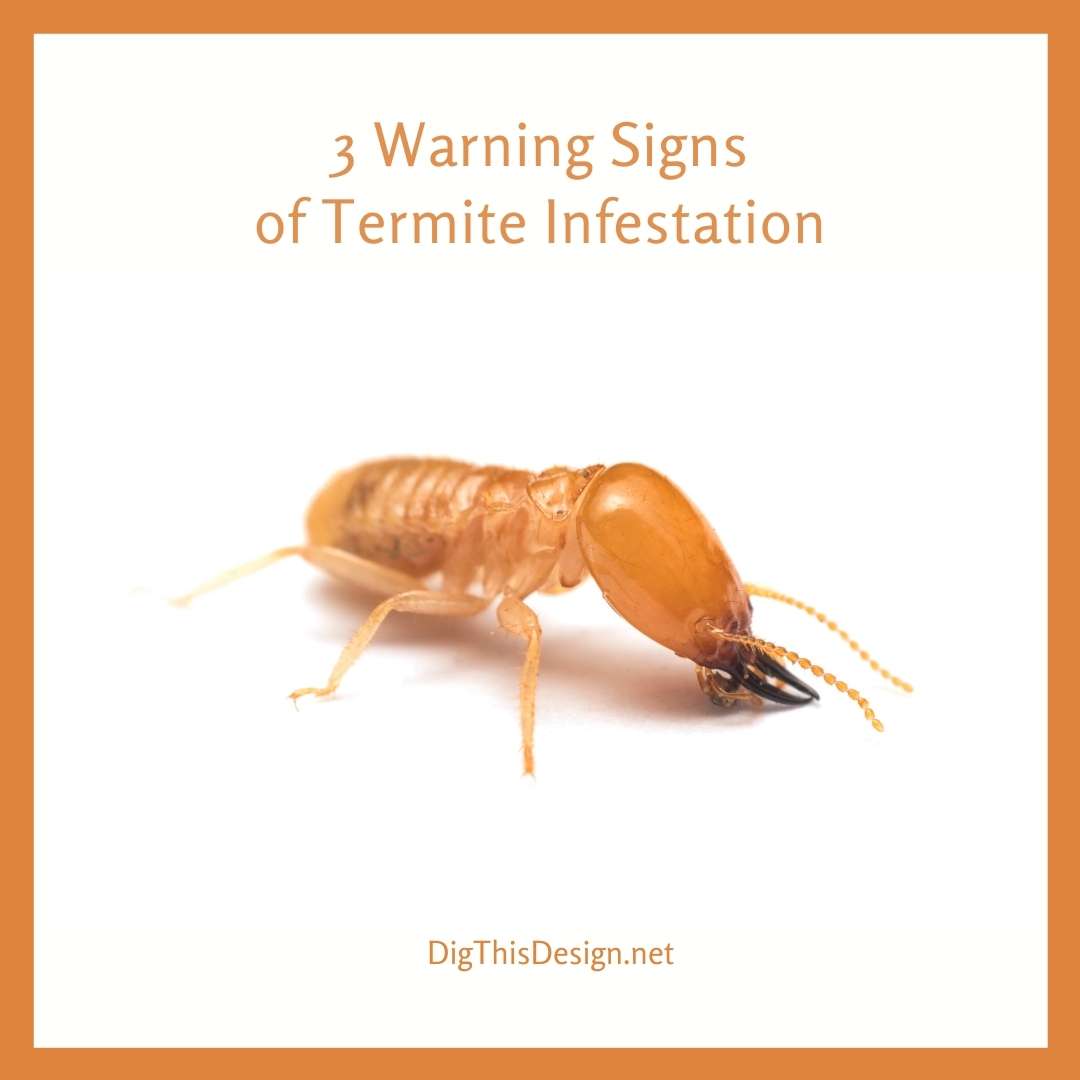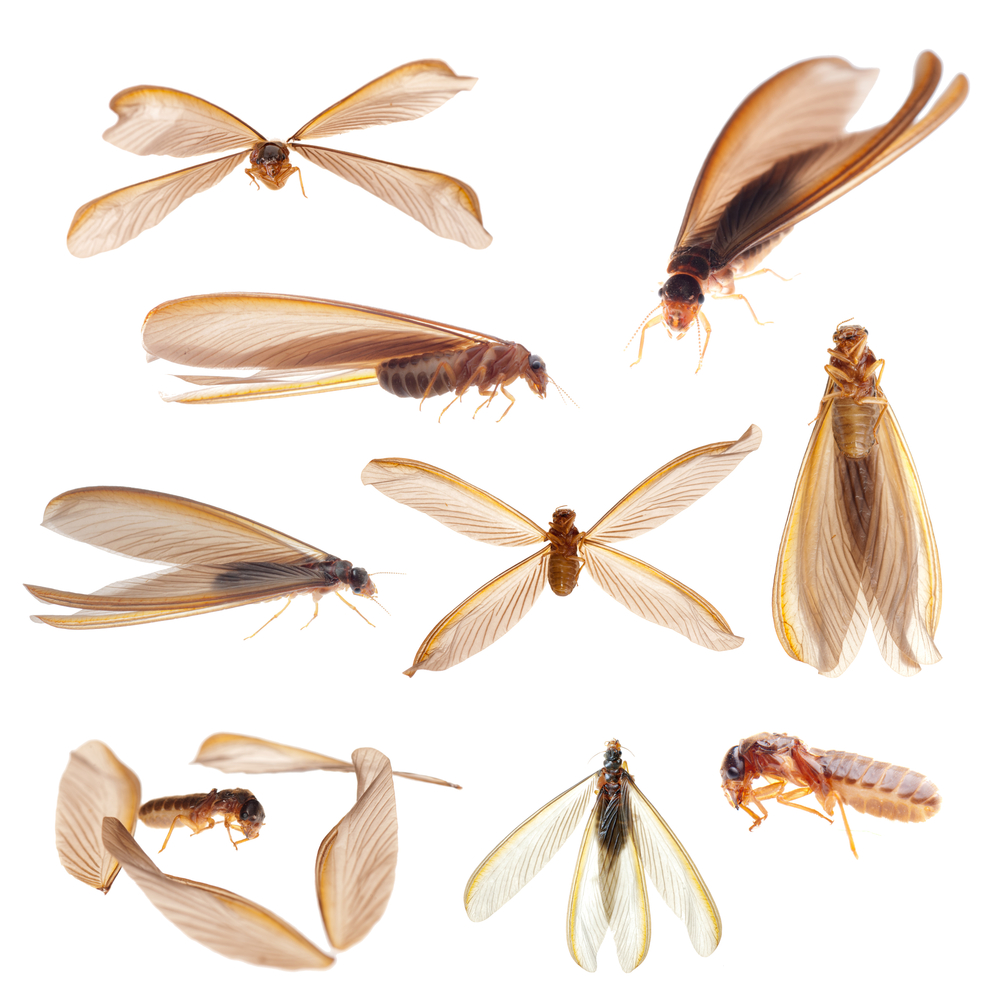Termites are a common pest problem in San Diego, California. They can cause serious damage to homes and other structures, if left untreated. In this article, we will discuss how to protect your home from termites and what options are available for termite control in San Diego.
Types of Termites

| Type | Description |
|---|---|
| Drywood Termites | These termites live in dry wood, such as logs, structural wood, and furniture, and don’t need contact with the soil to survive. |
| Subterranean Termites | These termites live in the soil and need contact with the soil to survive. They can enter structures through cracks and small openings in the foundations. |
| Formosan Termites | These termites are an aggressive subspecies of subterranean termites and can cause extensive damage to structures. |
Termite Habitats in San Diego

San Diego is home to several species of termites, including drywood and subterranean species. Drywood termites typically inhabit wood structures, such as wooden frames, beams and furniture, while subterranean termites prefer to stay in the soil. Drywood termites can also be found in dead tree stumps, in the cracks of wooden decks, and in walls and attics. Subterranean termites prefer damp and dark environments, such as near a water source, and they tend to be found in places like foundations, crawl spaces, and woodpiles. Both types of termites can also be found in wood piles, as well as other areas with wood construction.
Termites feed on wood, and their colonies can quickly cause extensive damage if left untreated. San Diego home and business owners should be aware of the signs of termite infestation, including mud tubes, hollow-sounding wood, and swarmers. It is important to inspect regularly for signs of termite activity and to contact a licensed pest control professional if an infestation is suspected.
Signs of Termite Activity in San Diego

Termite activity can cause a range of damage to homes and buildings in San Diego, from structural weakening to cosmetic damage. To prevent a termite infestation, it is important to be aware of the signs of termite activity.
Sightings
Termites are small, winged insects that may be seen around a home or building. In San Diego, termites are most active during the spring and summer months. If you see small, winged insects swarming around your home or property, it may be a sign of a termite infestation.
Mud Tubes
Termites build mud tubes as a way to travel from their nest to a food source. These mud tubes, which look like small tunnels, can be found on the outside walls of a home or building, or around the foundation.
Wood Damage
Termites feed on wood, so one of the most common signs of termite activity is wood damage. This can range from small holes in wood to wood that has been completely hollowed out. If you notice wood damage in or around your home or building, it is important to have it inspected for termites.
Discarded Wings
Termites shed their wings after they have found a mate and started a new colony. If you find small wings around your home or property, it may be a sign of a termite infestation.
Wet Wood
Termites need moisture to survive and thrive, so if you notice wet wood around your home or building, it may be a sign of termite activity.
Droppings
Termite droppings, which look like tiny pellets, may be found in or around a home or building. If you notice small pellets near wood or around your home, it may be a sign of a termite infestation.
By being aware of the signs of termite activity, you can help prevent an infestation in your home or building in San Diego. If you notice any of the signs listed above, it is important to have the area inspected by a professional.
Common Termite Species Found in San Diego
San Diego is home to many species of termites, including drywood, dampwood, and subterranean termites. The most common type of termite found in San Diego is the subterranean termite. Subterranean termites are the most destructive termite species in the US, and they live in colonies underground. They build mud tunnels to reach wood and other cellulose-based materials to feed on. These termites are brown to black in color and typically measure 1/8 inch to 1/2 inch long.
Drywood termites are typically found in attics and other dry wood sources in San Diego. They are light yellow to brown in color and are generally larger than subterranean termites, measuring up to 1 inch in length. Drywood termites can cause significant damage to wood structures, as they feed on both soft and hard wood.
Dampwood termites are typically found in damp or wet wood sources, such as in decaying tree stumps or moist wood. They are larger than both drywood and subterranean termites, measuring up to 1 1/2 inches in length. Dampwood termites are usually light brown in color. They can cause significant damage to wood structures, as they feed on soft and hard wood.
It is important to be aware of the different species of termites found in San Diego, as they can all cause significant damage to wood structures. If you suspect you have a termite infestation, it is important to contact a professional pest control expert who can properly identify the species and recommend the best course of action.
Termite Prevention Tips

- Inspect your property regularly for signs of termite activity.
- Remove any dead wood from the property, as it can be an attractive food source for termites.
- Store woodpiles away from the foundation of the building.
- Seal any cracks or crevices in the foundation of the building.
- Install a barrier around the perimeter of your foundation to prevent termites from entering.
- Keep all gutters and downspouts clear, as they can act as a bridge for termites to access your property.
- Repair any leaking pipes or faucets, as excess moisture can attract termites.
- Eliminate any standing water around the property, as this can also attract termites.
- Install vents or fans in crawl spaces and attics to reduce humidity.
- Trim any tree branches or shrubs that are in contact with the building, as this can provide an easy access for termites.
- Regularly check for signs of termite activity in areas such as door frames, window frames, baseboards and other wood structures.
Termite Treatment Options
San Diego homeowners may encounter termite infestations. The most common type of termite in San Diego is the subterranean termite. To treat an infestation, the homeowner should begin by having a termite inspection and a pest control professional’s assessment to determine the best treatment option. Treatment options include:
• Liquid Termiticides: A liquid treatment is the most common form of termite control in San Diego. This involves the application of a liquid termiticide to the soil around the entire structure. This prevents termites from entering the structure and killing existing colonies.
• Bait Systems: Bait systems are installed around the perimeter of the structure to intercept and kill termites before they can enter the structure. Baits are placed in the ground, where termites are more likely to feed.
• Fumigation: Fumigation is the most comprehensive form of termite control. The entire structure is sealed and a fumigant is released into the structure. This kills all the termites in the structure, including those in hard to reach areas.
• Wood Treatments: Wood treatments are used to treat wood that has been infested with termites. The wood is treated with a termiticide that kills the termites and prevents further infestation.
Whichever treatment option is chosen, it is important to follow the instructions of the pest control professional and make sure to keep up with regular maintenance and inspections to prevent further infestations.
Hiring a Professional Exterminator
- Research local exterminators in San Diego and get quotes.
- Verify the exterminator’s license and insurance.
- Request references from the exterminator on previous jobs.
- Discuss the type of termite infestation, its severity, and treatment plan.
- Ensure that the exterminator provides a written contract.
- Ensure that the exterminator follows all safety protocols.
- Consider the exterminator’s experience, reputation, and customer service.
- Schedule a follow-up inspection to assess the effectiveness of the treatment.
Frequently Asked Questions
What are the signs of termites in San Diego?
Termites can cause severe damage to structures in San Diego, and identifying signs of the pests is essential for prevention and control. Signs of termite activity include small holes in drywall, sagging or buckling of flooring, visible mud tubes, and the presence of winged termites or discarded wings. Termite droppings, known as frass, are small, pellet-like droppings that may be seen around infested wood. Swarms of winged termites in the home often indicate an established colony within the structure.
How can I protect my home from termites in San Diego?
The best way to protect your home from termites in San Diego is to partner with a professional pest control company. They can inspect your home for signs of termites, and then provide you with a prevention plan to keep them away. This typically includes sealing off entry points, such as cracks in the foundation, and treating the soil with a termite-repelling chemical. Additionally, you should reduce wood-to-soil contact by keeping wood debris away from the foundation, and store firewood at least 20 feet away from the house. Regular maintenance is important, so make sure to have your property inspected for termites at least once a year.
Is there a way to prevent termites from infesting my San Diego home?
Yes, there are several steps homeowners can take to help prevent termites from infesting their San Diego homes. These include inspecting the home regularly for signs of termites, sealing cracks and crevices in the foundation, repairing any water damage, and removing any wood from the home that is in contact with the soil. Additionally, homeowners should maintain proper landscaping, including keeping plants and trees away from the foundation, and keep mulch and other organic material away from the foundation and around the home. Finally, treating the home with a liquid termiticide can further help to prevent termite infestation.
Does San Diego Have Any Specific Species of Termites?
Yes, San Diego has several species of termites. The most common species of termites in San Diego are Subterranean Termites, Drywood Termites and Formosan Termites. Subterranean Termites live in the soil and build mud tubes to reach the wood in buildings and other structures. Drywood Termites are found in dry wood and do not require contact with the soil to survive. Formosan Termites are a more aggressive species of termite and can cause extensive damage to structures.
Are There Any Tips for Spotting Termites in San Diego?
Termites are pests that can cause serious damage to homes throughout San Diego. To prevent this, property owners should be on the lookout for these insects and take steps to reduce the chances of an infestation. Here are some tips for identifying the presence of termites in the San Diego area:
• Inspect the exterior of your home for evidence of termite activity such as mud tubes, wood damage, and discarded wings.
• Look for signs of swarms, such as flying insects and piles of wings near windows and doors.
• Check for signs of wood rot, such as soft wood, sawdust, and damp patches.
• Be aware of any bubbling or discoloration in paint or wallpaper, which may be a sign of a termite infestation.
• Listen for hollow or clicking sounds in walls and floors, which could indicate the presence of termites.
• Have your property inspected regularly by a professional pest control company.
Conclusion
The best way to protect your home from termites in San Diego is to stay vigilant and take preventive steps such as installing chemical barriers, maintaining proper drainage, and avoiding wood-to-soil contact. Regular home inspections should also be done to detect any problems early on. If you suspect a termite infestation, contact a professional pest control expert to inspect and treat your home.







